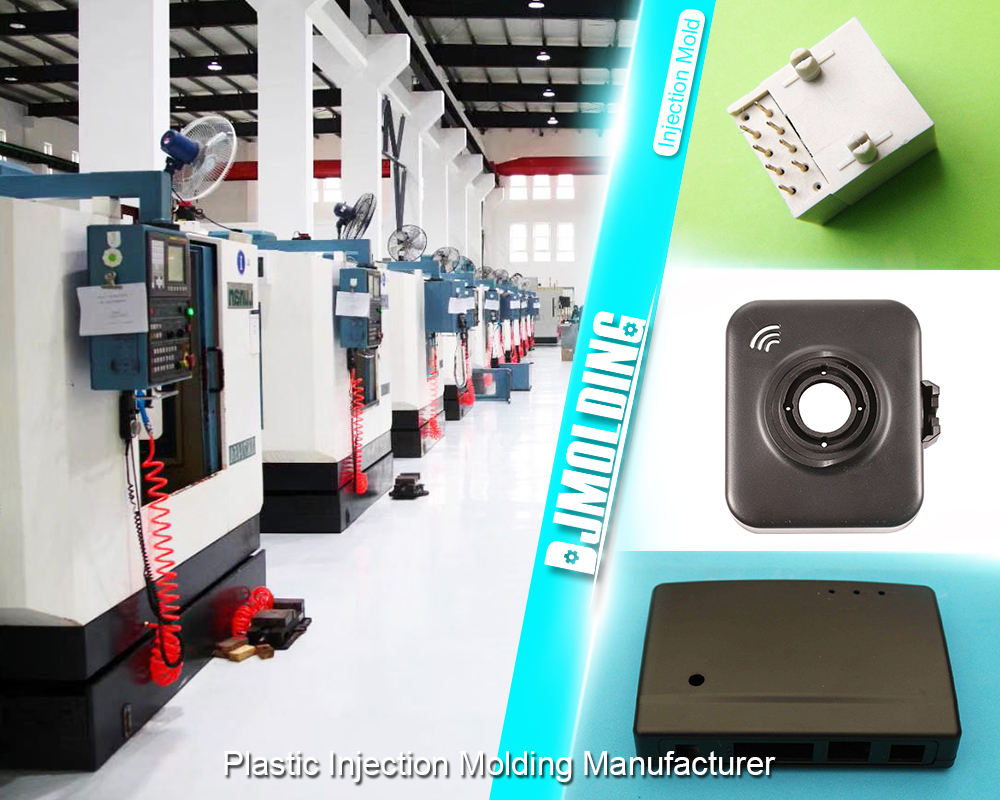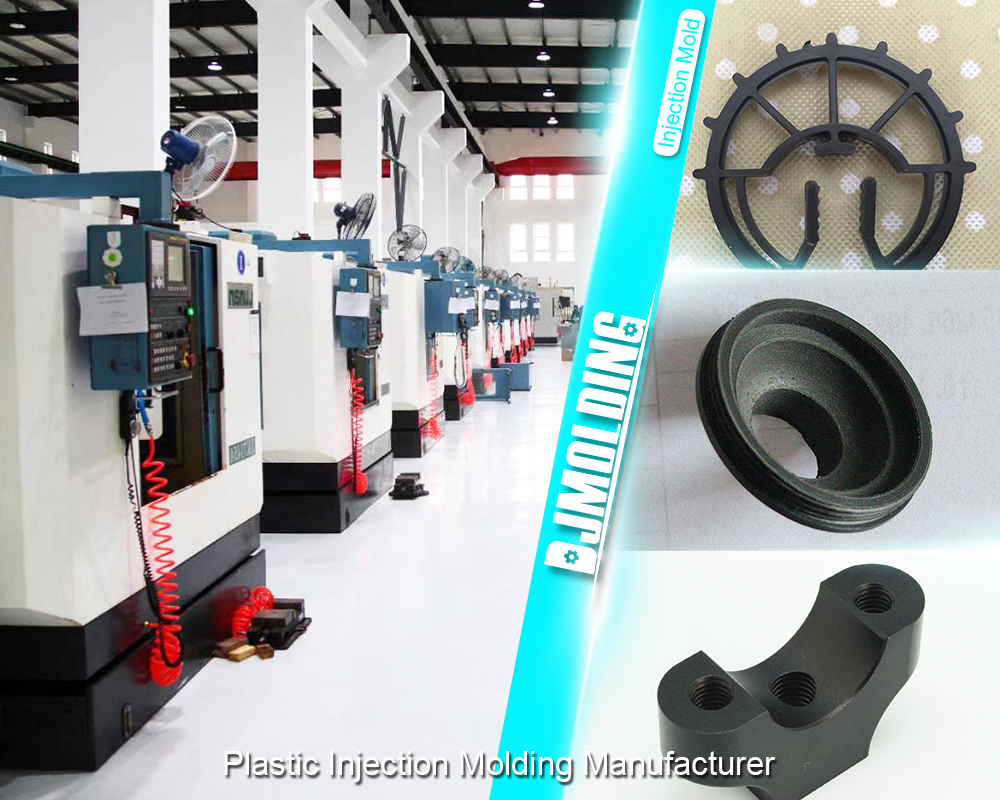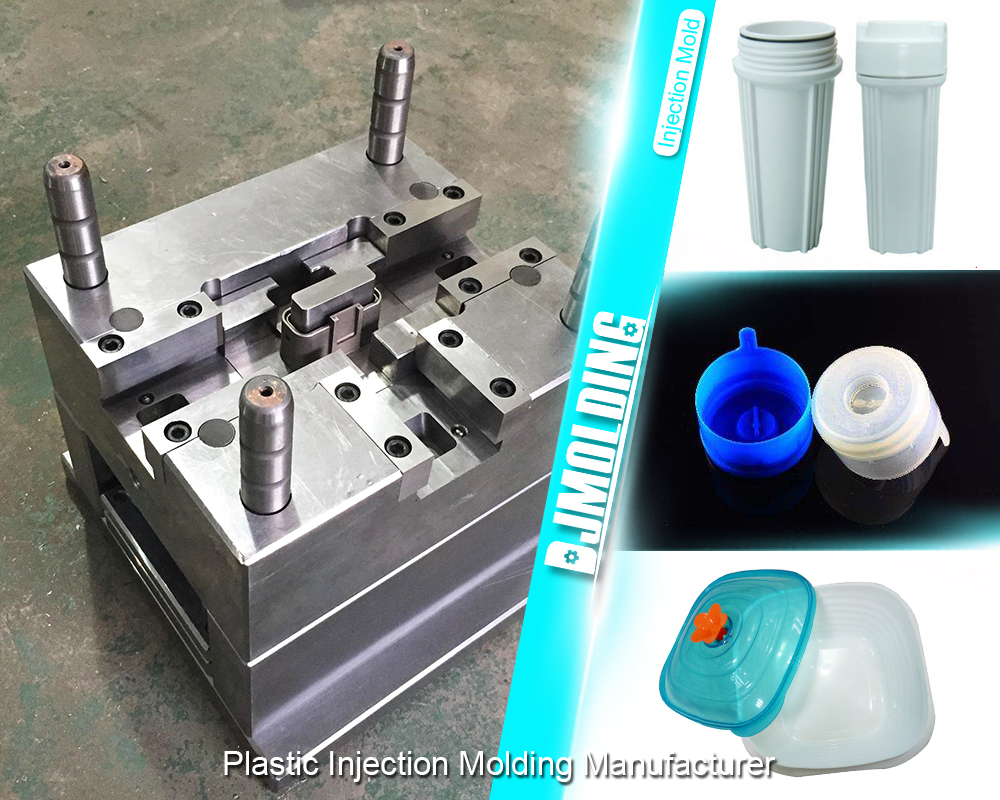Quick Turn Plastic Injection Molding : The Ultimate Guide for Beginners
Quick Turn Plastic Injection Molding: The Ultimate Guide for Beginners
Plastic injection molding is a highly effective and efficient manufacturing process that has revolutionized plastic parts manufacturing. It involves injecting molten plastic material into a mold to create complex shapes with high accuracy and consistency. The method is cost-effective and versatile, making it an ideal option for producing large parts. In this guide, we will take a deep dive into the world of plastic injection molding, covering everything from its history and basic principles to the different types of molds and machines used in the process.

The History of Plastic Injection Molding
In the mid-1800s, manufacturers produced the first celluloid billiard balls, which marked the beginning of the history of plastic injection molding. John Wesley Hyatt first patented the process in 1872 and invented a machine that injected celluloid into a mold. This early machine laid the foundation for the modern plastic injection molding process.
During the 20th century, plastic injection molding grew in popularity as more and more manufacturers recognized its advantages over other manufacturing processes. In the 1950s, manufacturers introduced the first fully automated injection molding machine, which paved the way for the mass production of plastic parts. Since then, the process has evolved with advancements in technology and materials, making it a go-to option for plastic parts manufacturing.
The Basic Principles of Plastic Injection Molding
Plastic injection molding is a complex process that involves several components, including the injection molding machine, plastic material, and mold. Here are the basic principles of plastic injection molding:
The Injection Molding Machine and its Components
The injection molding machine is the heart of the plastic injection molding process, and it is responsible for melting the plastic material and injecting it into the mold. The device comprises several components, including the hopper, screw, barrel, and injection unit.
The Plastic Material and its Properties
The plastic material used in the injection molding process must have specific properties that allow it to flow easily and solidify quickly. These properties include viscosity, melt flow rate, and tensile strength.
The Mold and its Design
The mold is a critical component of the injection molding process, and its design is essential to achieving the desired shape and quality of the part. The mold consists of two halves, the cavity, and the core, forming the final piece’s condition. The mold must accommodate the injection molding machine and the plastic material.
The Plastic Injection Molding Process
The plastic injection molding process consists of several stages: clamping, injection, cooling, and ejection.
Clamping: Securing the Mold
The first stage of the process is clamping, which involves securing the mold in place. The operator connects the two halves of the mold and injects the plastic material into the mold through the injection unit.
Injection: Melting and Injecting the Plastic Material
The second stage involves melting the plastic material and injecting it into the mold. The plastic material is dissolved in the barrel of the injection molding machine and then injected into the mold cavity.
Cooling: Solidifying the Plastic Part
The third stage involves cooling the plastic part to solidify it. The mold is cooled using water or oil, and the plastic part is allowed to cool and solidify within the mold.
Ejection: Removing the Part from the Mold
The final stage of the process involves ejecting the plastic part from the mold. Using ejector pins, the operator opens the mold and removes the piece from the cavity.
The Different Types of Molds Used in Plastic Injection Molding
The mold used in plastic injection molding is critical to the success of the process, and the mold determines the final shape, texture, and quality of the plastic part. Several types of molds are used in plastic injection molding, each with advantages and disadvantages.
Two-plate mold
The two-plate mold is the simplest and most widely used mold in injection molding. The clamp unit holds together two plates to form the mold. This sentence is already in the active voice, clearly stating who or what is acting. The two-plate mold is inexpensive and suitable for low to medium-volume production runs.
Three-plate mold
The three-plate mold is similar to the two-plate mold but has an additional stripper plate. The operator uses the stripper plate to eject the plastic part from the mold, eliminating the need for ejector pins. The three-plate mold suits high-volume production runs and pieces with complex geometries.
Hot runner mold
The heating system in the hot runner mold keeps the plastic material in the runner system molten, eliminating the need for the mold to eject runners with the part. Using a hot runner mold reduces waste and cycle time and improves part quality. The hot runner mold suits high-volume production runs and characteristics with complex geometries.
Cold runner mold
The cold runner mold is the traditional mold used in injection molding. The runner system in the mold ejects with the part, increasing waste and cycle time. The cold runner mold is inexpensive and suitable for low to medium-volume production runs.
Insert mold
Manufacturers use the insert mold process to mold metal or plastic inserts into the plastic part. They place the insert into the mold cavity and inject plastic around it. The insert mold suits low to medium-volume production runs and interests with metal or plastic inserts.
The Different Types of Injection Molding Machines
The injection molding machine is the heart of the plastic injection molding process. There are several types of injection molding machines, each with its advantages and disadvantages.
Hydraulic injection molding machine
The hydraulic injection molding machine is the most commonly used in injection molding, and it uses hydraulic pressure to drive the plastic material into the mold cavity. The hydraulic injection molding machine is inexpensive and suitable for low to high-volume production runs.
Electric injection molding machine
The electric injection molding machine uses electric motors to drive the plastic material into the mold cavity. It is more energy-efficient than the hydraulic injection molding machine and is suitable for low to medium-volume production runs.
Hybrid injection molding machine
The hybrid injection molding machine combines the best features of the hydraulic and electric injection molding machines. It uses a combination of hydraulic pressure and electric motors to drive the plastic material into the mold cavity. The hybrid injection molding machine suits medium to high-volume production runs.
The Advantages and Disadvantages of Plastic Injection Molding
Like any manufacturing process, plastic injection molding has its advantages and disadvantages. Here are some of them:
Advantages:
- High accuracy and consistency: Plastic injection molding offers high accuracy and consistency in producing plastic parts. The insert mold process suits applications requiring precise dimensions and specifications.
- Wide range of materials and colors: Manufacturers can use plastic injection molding with a wide range of materials, including thermoplastics, thermosets, and elastomers. It also offers a wide range of colors, allowing for greater flexibility in design.
- Cost-effective for large production runs: Plastic injection molding is cost-effective for large production runs, making it ideal for the mass production of plastic parts.
Disadvantages:
- High initial investment cost: Plastic injection molding requires a high initial investment cost for the molds and machines. The high cost of setting up a plastic injection molding operation can be a barrier for small companies or individuals who want to produce small runs of parts.
- Not suitable for small production runs or prototypes: Plastic injection molding is not ideal for small production runs or prototypes due to the high initial investment cost.
Tips for Successful Plastic Injection Molding
You must follow specific tips and best practices to achieve successful plastic injection molding. Here are some suggestions for successful plastic injection molding:
- Proper design and preparation of the mold and plastic material: Proper design and practice of the mold and plastic material are crucial for successful plastic injection molding. Preparing for plastic injection molding includes several key steps, such as selecting suitable materials, designing the mold to meet the required specifications, and preparing the plastic material for injection.
- Choosing the appropriate injection molding machine and process parameters: Choosing the suitable device and process parameters, such as temperature, pressure, and injection speed, is crucial for successful plastic injection molding. It ensures that the plastic material is melted and injected into the mold at the right time and quantity.
- Regular maintenance and inspection of the equipment: Regular maintenance and review of the equipment, including the molds and injection molding machines, is crucial for ensuring the quality and consistency of the plastic parts produced.

CONCLUSION
Plastic injection molding is a complex and versatile process transforming the manufacturing industry. From its early beginnings to its current advancements, plastic injection molding has become the go-to manufacturing process for creating high-quality plastic parts efficiently and accurately. By understanding the basic principles, types of molds and machines, and tips for successful plastic injection molding, you can use this powerful technology to create your plastic parts for various applications.
For more about quick turn plastic injection molding,you can pay a visit to Djmolding at https://www.djmolding.com/ for more info.




